Estimated reading time: 22 minutes
We’ll get to the point. Making white vinegar from scratch is not easy. Unlike fruit based vinegars like apple cider vinegar or wine vinegars, white vinegar starts with ethanol.
In case you’re rusty on your science that’s alcohol: alcohol as in homemade vodka or moonshine. That’s as opposed to the wines and hard ciders of all of the other fruit based vinegars.
And making homemade vodka or moonshine is just the first step. You then need to introduce some aceto bacteria (Acetobacter aceti) to the alcohol to convert it to acetic acid which is the foundation of white vinegar.
Want to save this post for later? Click Here to Pin It On Pinterest!
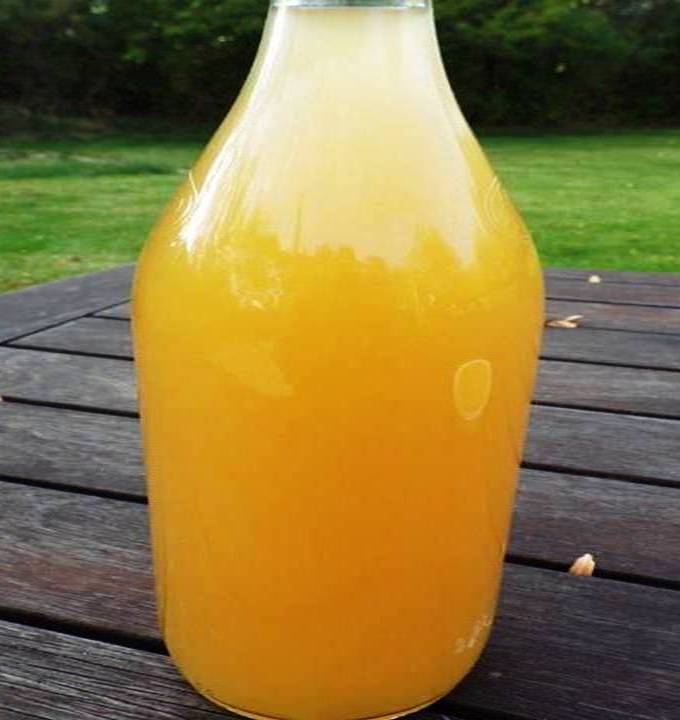
This is actually the same process for making cider vinegar or any wine vinegar. You ferment the apple cider into applejack or hard cider and then add the bacteria to convert it into cider vinegar. The same applies to turning wine into wine vinegar. But that’s easy compared to some of the steps and missteps of making white vinegar.
A Double Fermentation Process
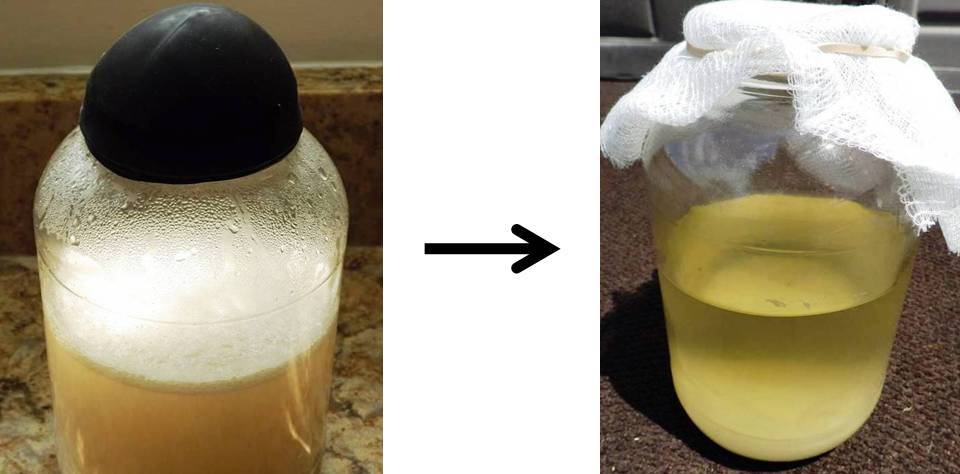
Making white vinegar involves two fermentation steps.
- The first step ferments sugars to alcohol. The alcohol is a clear spirit (although cloudy before filtering) with a proof that can vary widely. Yeast is used to activate the process. The resulting alcohol will most likely taste terrible, but that all gets better when it’s converted to vinegar.
- The second step ferments the alcohol to vinegar. That’s when the aceto bacteria converts the alcohol to acetic acid. Acetic acid is essentially vinegar but it may be highly concentrated. Vinegars recommended as suitable for human consumption typically have no more than 5% acetic acid although some fruit vinegars like sherry vinegar can go up to 8%.
But There’s a Catch

Anyone can home brew beer or ferment fruits into wine. It’s totally legal and many wine makers use their wine to make vinegar. You could even home ferment apple cider into applejack or hard cider.
Where it gets a little complicated is the whole ethanol or alcohol thing. Making applejack or red wine is easy compared to distilling sugar water, grain or potato peels into clear alcohol. You could just buy a gallon of vodka and turn it into white vinegar but that doesn’t make a whole lot of sense from a cost standpoint. A gallon of the cheapest vodka is about $10 bucks. And….
White Vinegar is Cheap
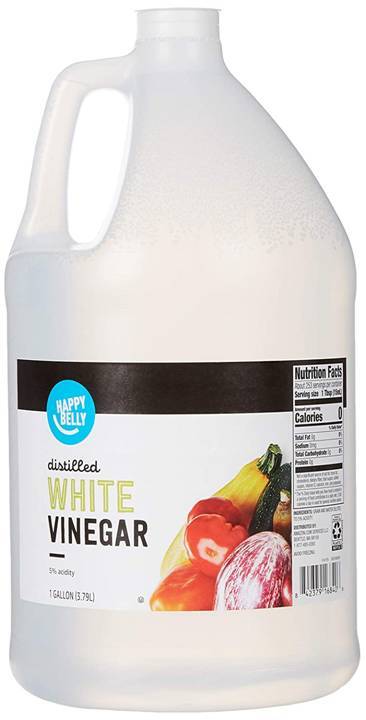
Across the category of vinegars, white vinegar is the cheapest. You can buy a gallon of white vinegar for about $3 bucks if you buy a store brand. Even the national brands like Heinz run a little more than $4, sometimes $5.
Some cider vinegars cost about the same unless you buy a natural, organic cider vinegar with the mother, and wine vinegars usually cost the most. But here’s the dilemma. Why and when would you make your own white vinegar when you can buy it for so little and stockpile it?
And there’s Another Catch

It’s illegal in the United States to home distill alcohol. Here again, you can make all the beer, wine and applejack you want –but you need a permit to distill anything like sugar, molasses, grains, potato peels or corn into ethanol or alcohol.
And these permits aren’t like getting a fishing license. Your distilling operation will be subject to inspection, you have to have a clear commercial reason for manufacturing the spirits, and your final product is also subject to inspection, taxes and the list goes on. How complicated it all gets depends a lot on the state where you live, but it’s also a federal law.
All of that creates a bit of a dilemma for anyone who decides they want to make their own white vinegar. Nobody will care if you buy a gallon of vodka for $10 and turn it into a gallon of $3 white vinegar. You just can’t legally make your own vodka.
So Why or When Would Anyone Do This?
The last thing we want to do is encourage anyone to break the law. But if you live in another country where the laws are not as strict you can home distill. There’s also the possibility that a society could crumble into collapse. At that point everything becomes a matter of survival, and something like distilling spirits may either become legal or simply ignored in the grand scheme of things.
For that reason this is offered as a possible solution to satisfy a future need in a time of catastrophic disaster. The photos demonstrate all aspects of the process but we substituted store-bought vodka for the final step. We can show you how to make it but we didn’t actually make ethanol for this article.
Given all of these caveats and permutations, you may wonder why you may ever need to make white vinegar when you can stockpile it so inexpensively.
There’s a Few Reasons to Consider
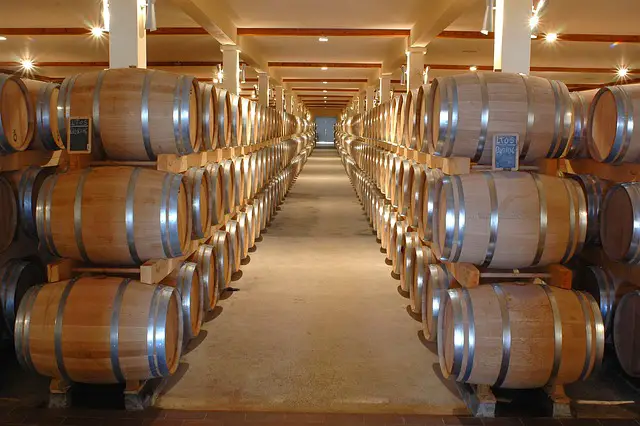
The low cost of white vinegar is driven by the significant supply that is typically available. White vinegar is used frequently in food processing for everything from ketchup to mustard to barbecue sauce, pickling and a few hundred other products. The result of the large demand from commercial food processors results in a very large supply of white vinegar for everyone. The result is the lower price.
However, as we saw during the pandemic, unplanned events can not only affect overall manufacturing but the supply chain and pricing as well. A significant event like a catastrophic disaster or an economic collapse could make everything more expensive or simply unavailable. White vinegar will also have value as a barter item in a time of societal distress.
It’s during desperate times that simple things that we take for granted are suddenly unavailable or surprisingly expensive. That’s a time when you might want to have an idea of how to make something as basic (but complicated) as white vinegar.
Stockpiles Run Out

And there’s another consideration. Any event that requires anyone to turn to their stockpile of supplies to survive is only as serious as the duration of the event. And that’s the catch.
Catastrophic events can compound or cascade leading to long durations of shortages driven by hoarding, panic buying and hyperinflation. Stockpiles eventually run out and sustainability becomes the only viable solution to continued survival.
A big step towards sustainability is knowing how to make things like white vinegar. You’ll also learn a thing or two about distilling spirits (assuming it eventually becomes legal.)
So What’s So Special About White Vinegar?
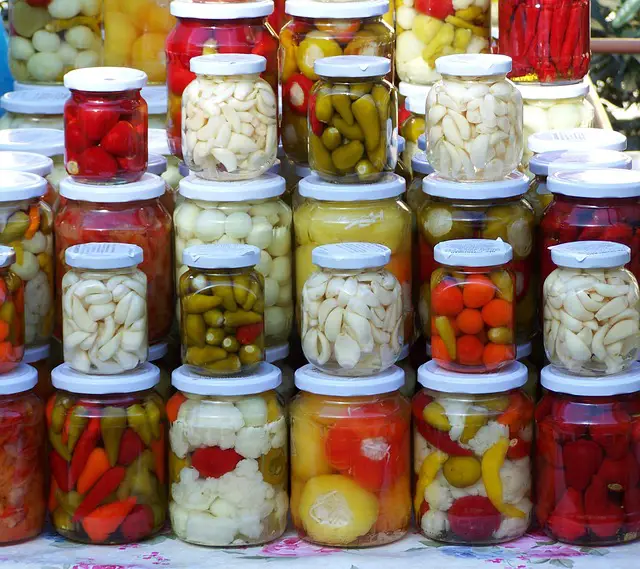
One of the biggest benefits of white vinegar is its use in canning. Every canning recipe recommends that the vinegar used be at least 5% acetic acid. White vinegar easily achieves that percentage and homemade white vinegar often has to be diluted to take it down to 5%.
On the other hand, the easier to make fruit and wine vinegars often struggle to even get to 4% undiluted. They work fine in salad dressings and for general cleaning, but as a food preservation ingredient they often come up short on the 5% acetic acid recommended for canning.
One thing to remember if you have a vinegar with a low acetic acid percentage is that you can concentrate it by freezing. Freeze the vinegar in a large bowl and remove some of the ice that forms at the top. That’s water and that reduces some of the dilution.
But be careful. Most vinegars intended for consumption range from 4 to 8% acetic acid. 5% is the common recommendation but there are those sherry vinegars up at 8%. The intent and the hope with some of those higher percentage vinegars is that you will dilute the vinegar in a salad dressing or some other way.
10% acetic acid will literally burn your tongue. You want to try for 5%, no more with your homemade white vinegar. A 5% acetic acid level in vinegar measures 2.4 on a pH test strip. We’ll demonstrate how to use pH test strips to measure acidity later in the article.
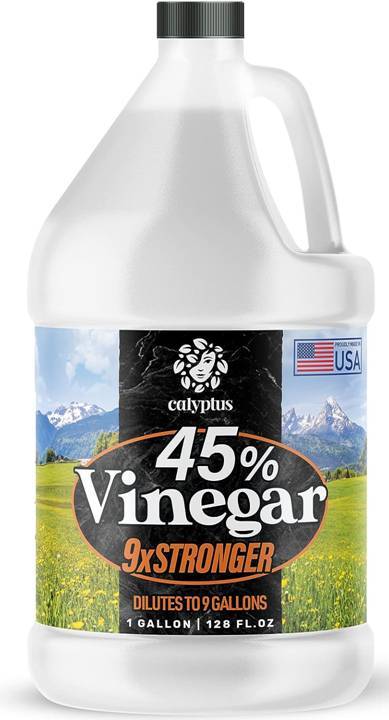
Another benefit of white vinegar is that higher percentages of acetic acid (up to 35% and more) make it an excellent antibacterial cleaning solution. That’s the good news. The bad news is that any vinegar with an acetic acid percentage that high should never be ingested. 35% would be toxic. Higher percentages can be dangerous and burn not only the tongue but the throat, stomach and intestinal tract. Remember: it’s an acid.
In fact, we’re also going to cover how to measure the percentage of acetic acid you get in any home-brewed white vinegar. From there you can dilute it for use with food or keep it strong as an anti-septic cleaner.
How high a percentage of acetic acid you end up with is a bit hit-or-miss. A lot depends on factors out of your control like temperature, the health of the aceto bacteria, and the alchemy of fermentation and distilling. That’s why we’ll cover both the ways to measure your alcohol percentage or “proof,” plus the percentage of acetic acid in your final white vinegar product.
If it sounds like a lot of work, it is. But if there are no sources for a vital food preservation ingredient like white vinegar, it’s at least worth knowing how to make it from scratch. Then again, apple cider vinegar could work just fine for canning if you get it to 5% acetic acid.
Meet the Mother
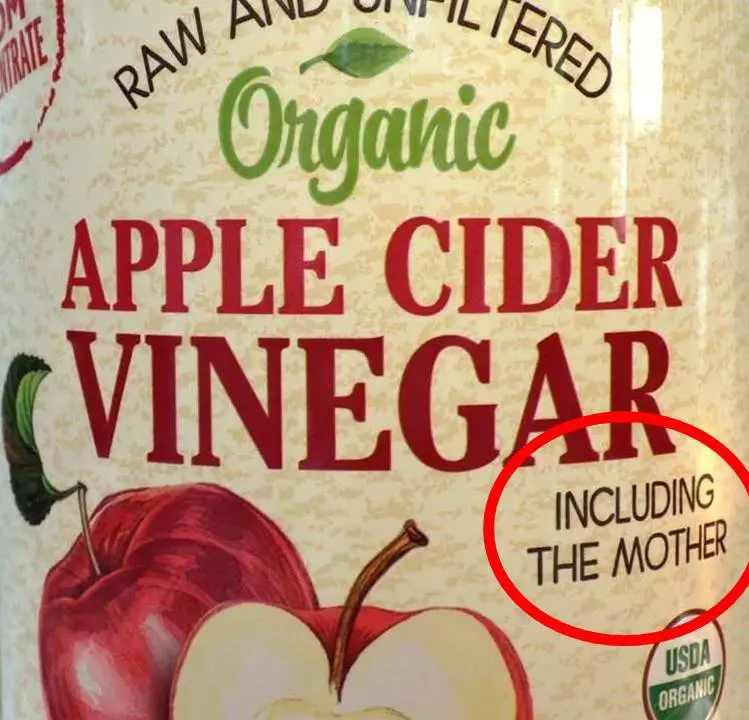
A common term that shows up in fermentation, especially as it relates to making vinegar, is “the mother.” You can even see it on labels of organic vinegars when they proudly proclaim, “Including the mother.” You can usually see it as a thin film at the bottom of an organic cider vinegar bottle.
The mother is a congealed mess of active yeast including the previously mentioned and precious “aceto bacteria.” This “acetic” bacteria is what turns alcohol into vinegar. It shows up as a “biofilm” that starts out by floating on top of the alcohol.
It’s composed of cellulose, yeast and the aceto bacteria. Oxygen is critical to the initial formation of the mother and we’ll demonstrate how to design your alcohol fermentation jar.
Here’s the recipe for the first fermentation step to make an ethanol foundation that will be fermented a second time to create white vinegar.
Equipment:
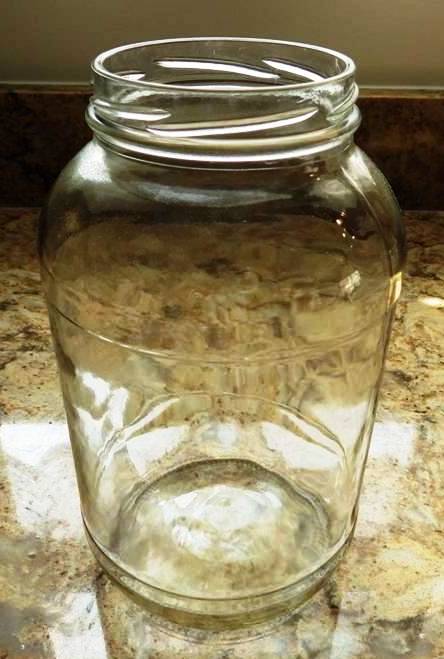
- A sterile one-gallon glass jug or a ½ to 1-gallon jar
- An air stopcock that will allow fermentation gases (carbon-dioxide) to escape without allowing air into the jug, or a large balloon stretched over the opening of the jar
- A saucepan
- A candy thermometer
- Cheesecloth
Ingredients:
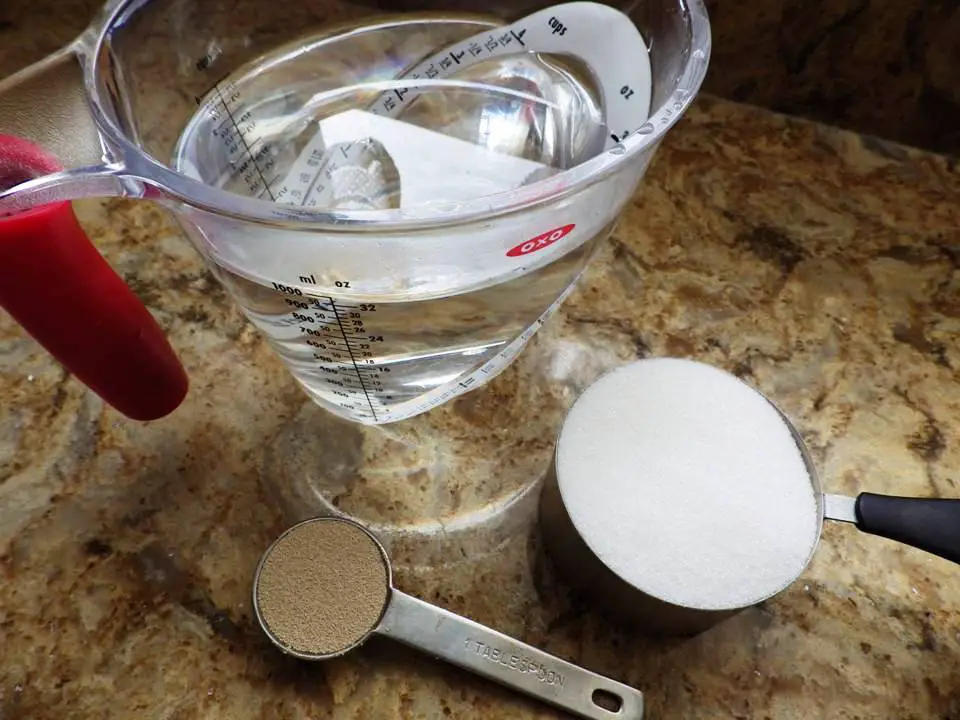
- 4 cups of water
- 1 cup of sugar
- 1 tbsp. of Brewer’s yeast or bread yeast
Directions:
1. Combine the sugar and the water in the saucepan and bring to a boil until the sugar is dissolved.
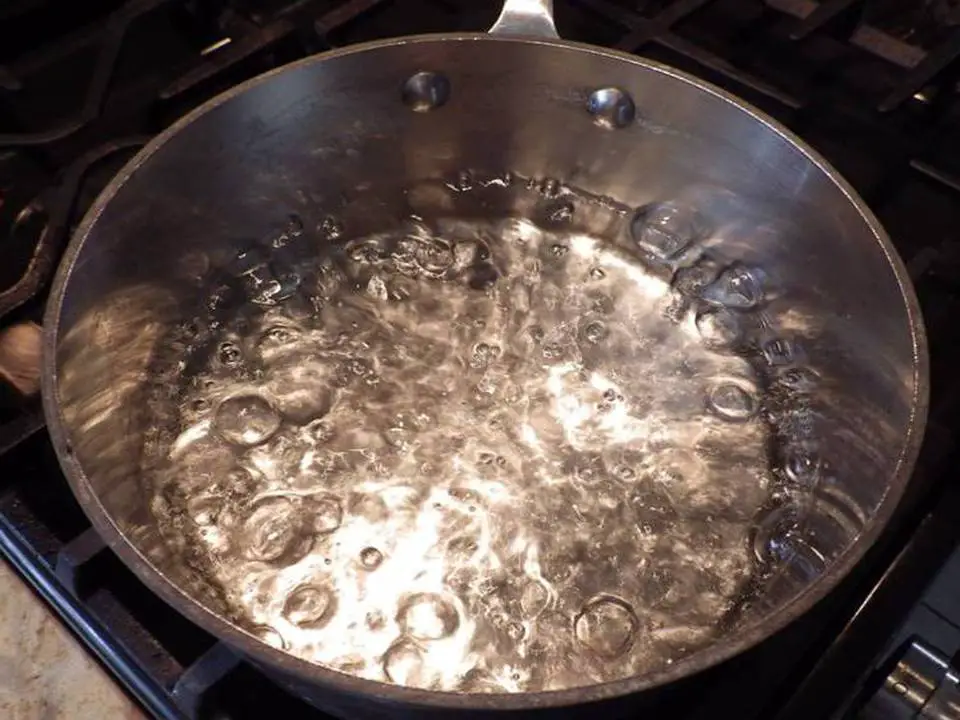
2. Let the water cool until it reaches 110 degree F.
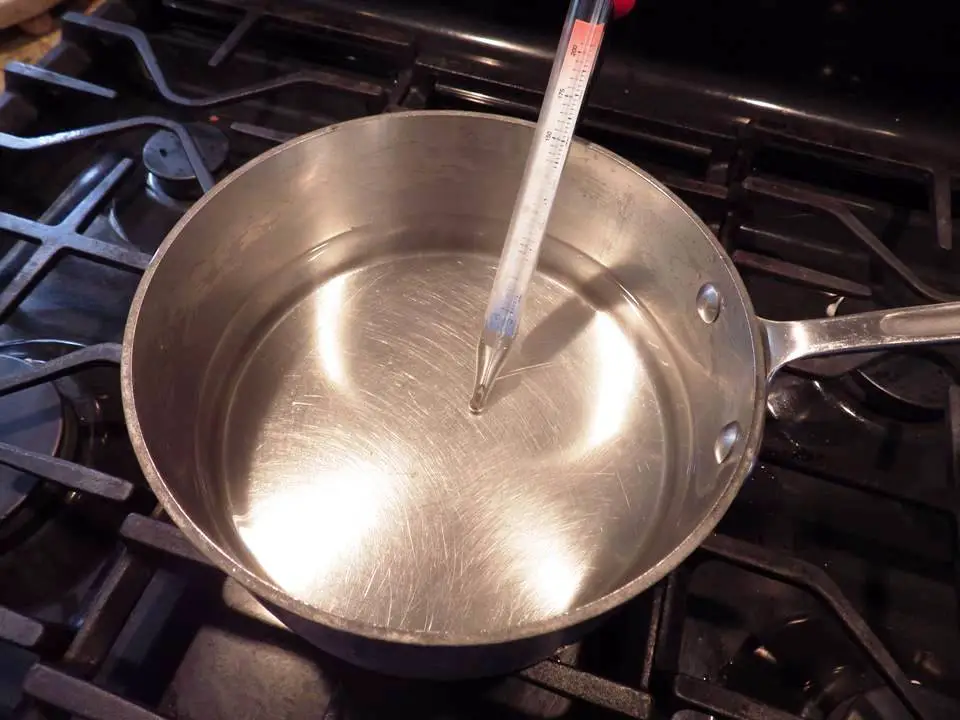
3. Add the yeast to your jug or jar
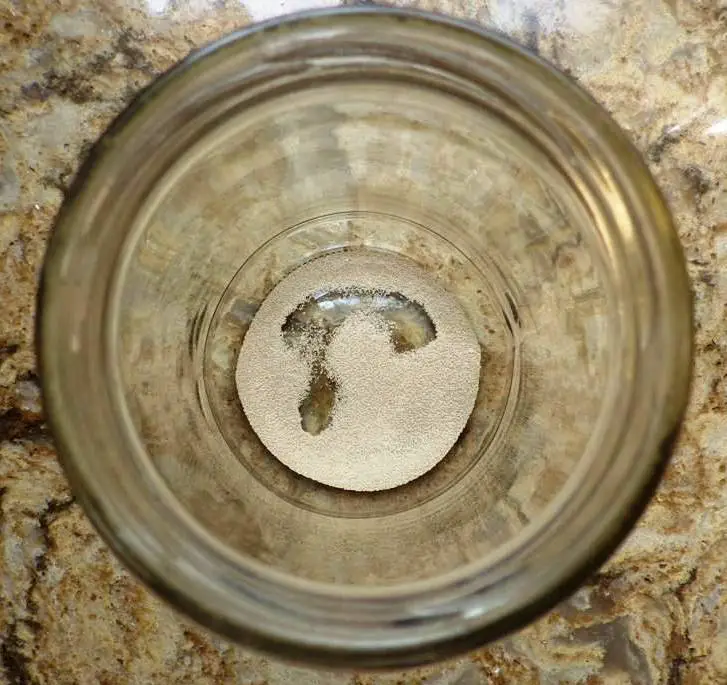
4. Pour the sugar/water mixture into your jug or jar and stir or shake to incorporate the yeast. Make sure it’s not hotter than 110 degrees or the hot water will kill the yeast.
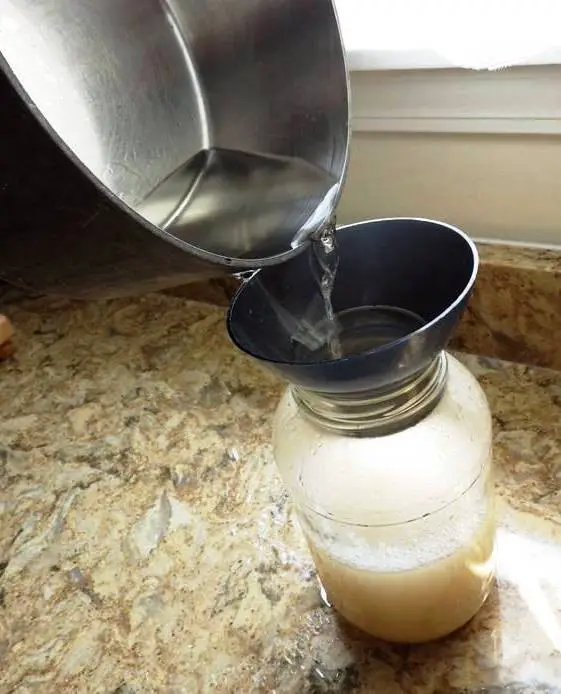
5. Leave the jar open to the air for 24 hours to get things jumpstarted. Store the jar at room temperature out of the sun.

6. After 24 hours, insert the stopcock or stretch the balloon over the top. If using a balloon you’ll have to lift a flap off the side of the jar to let the gases escape from time to time.
7. Place the jar in the shade and keep at room temperature for about 2 weeks.
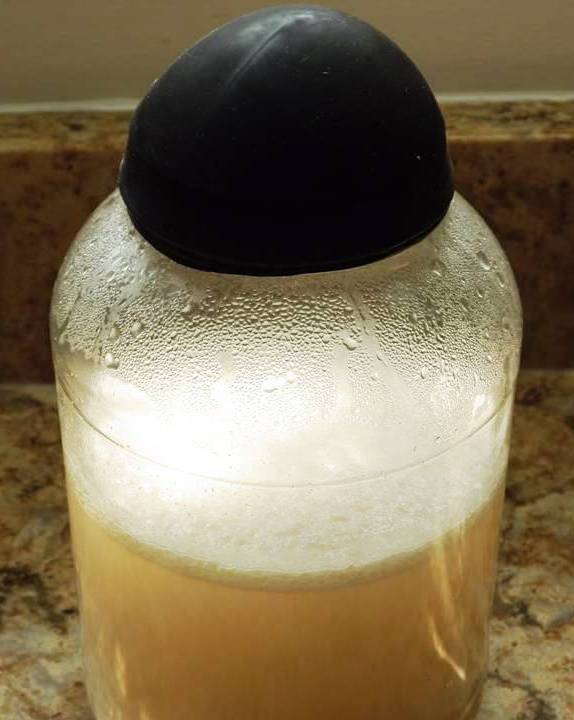
8. You should see bubbles forming at the top and the balloon stretching if you’re using one.
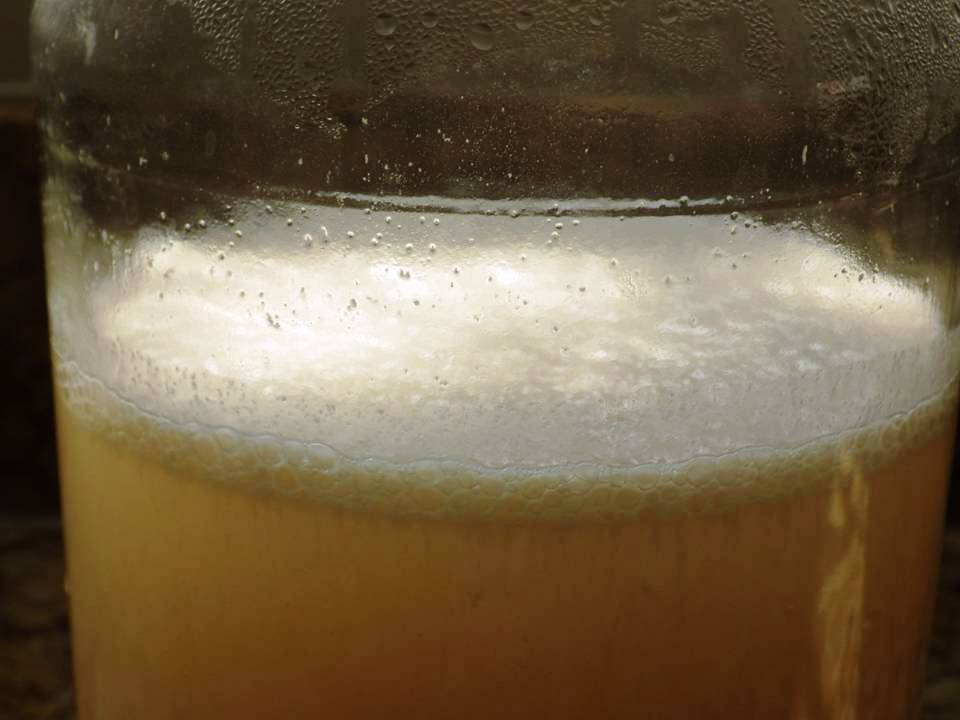
9. When the bubbling and fermentation activity ceases, test the result either by smelling or testing with an alcohol hydrometer also known as an alcoholmeter.

Avoid any urge to taste it at this point. Ideally you have an alcohol reading of 5%. That will easily convert to a vinegar that is 5% acetic acid. Chances are the alcohol level will be higher.
You’re now ready for the next fermentation step.
Bring on the Mother
You need to introduce an acetic acid starter to turn your ethanol into white vinegar. This is the mother we mentioned previously. There’s an easy way to do this and of course, a hard way.

The easy way is to purchase a bottle of organic apple cider vinegar that indicates it is bottled “including the mother.” You should be able to see it as a thin layer of brownish-orange sediment at the bottom of the bottle.
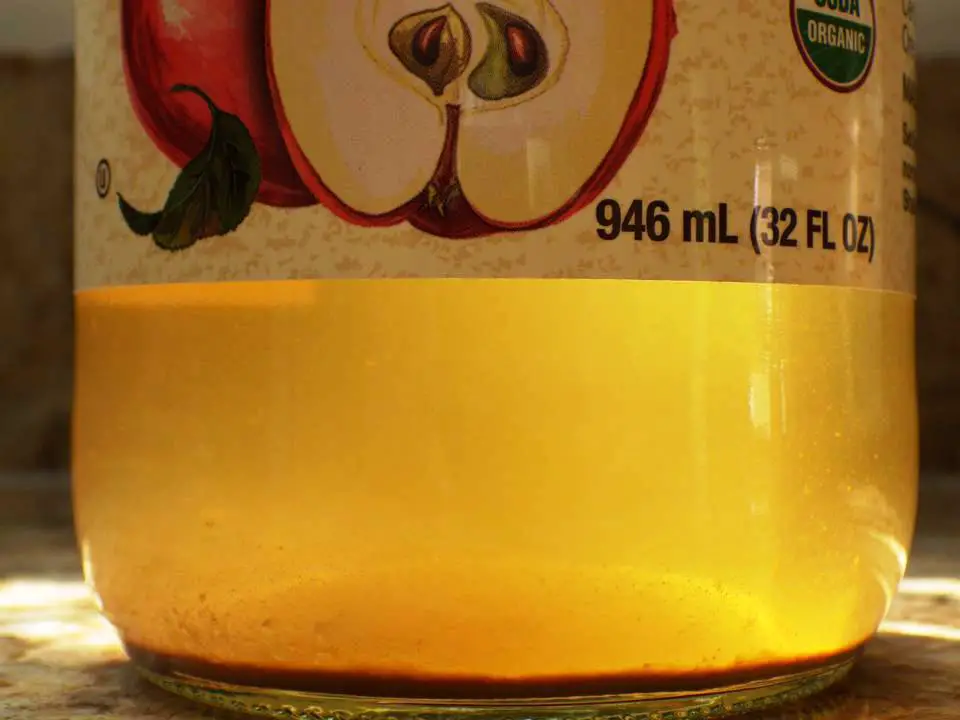
Some recommendations say you should simply shake the bottle and pour a couple of tablespoons of the mixed mother-vinegar into your jug, jar or porcelain crock. That should work but we’re going to see if we can get a good concentration of the mother at the bottom of the bottle.
Here’s how to directly harvest the mother from organic vinegar:
1. Place your finger over a soda straw that will reach the bottom of your bottle.
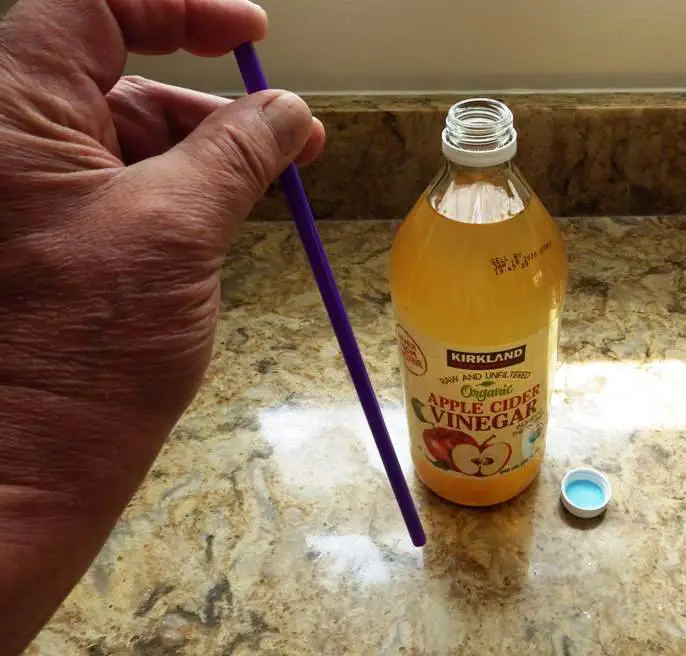
2. Insert the straw to the bottom of the bottle until it touches the mother residue at the bottom.
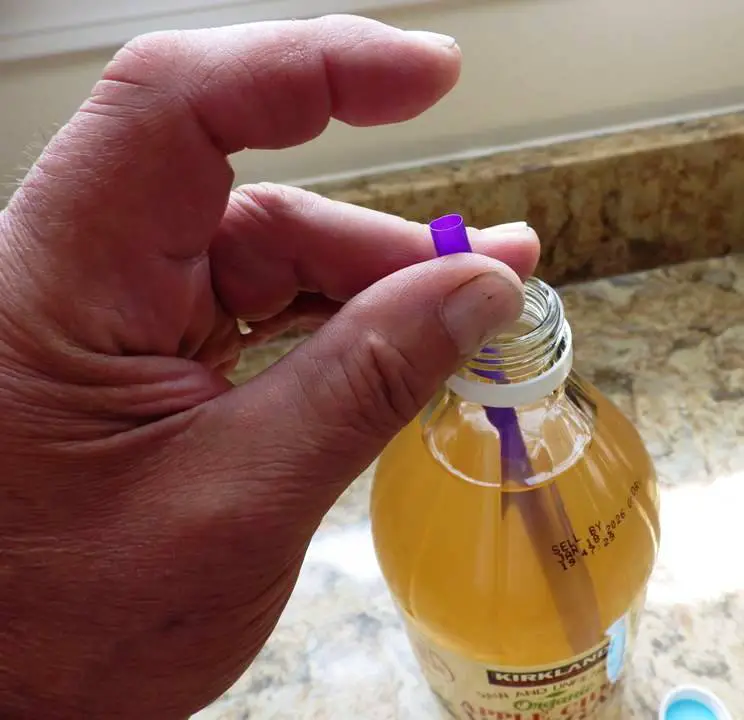
3. Release your finger from the straw drawing up some vinegar and a good dose of the mother residue.
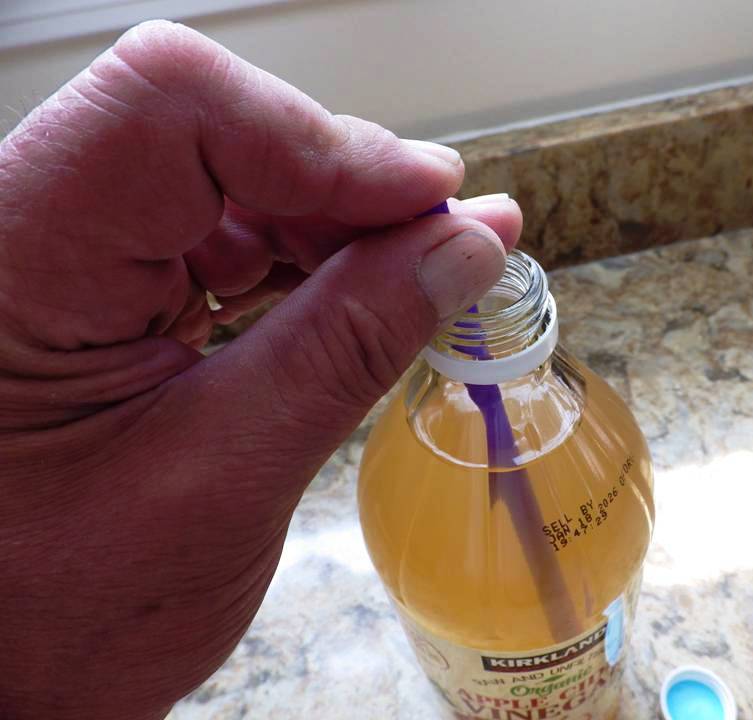
4. Place you finger back on the straw and quickly remove the straw.

5. Withdraw the straw keeping your finger in place and guide it carefully to a bowl.
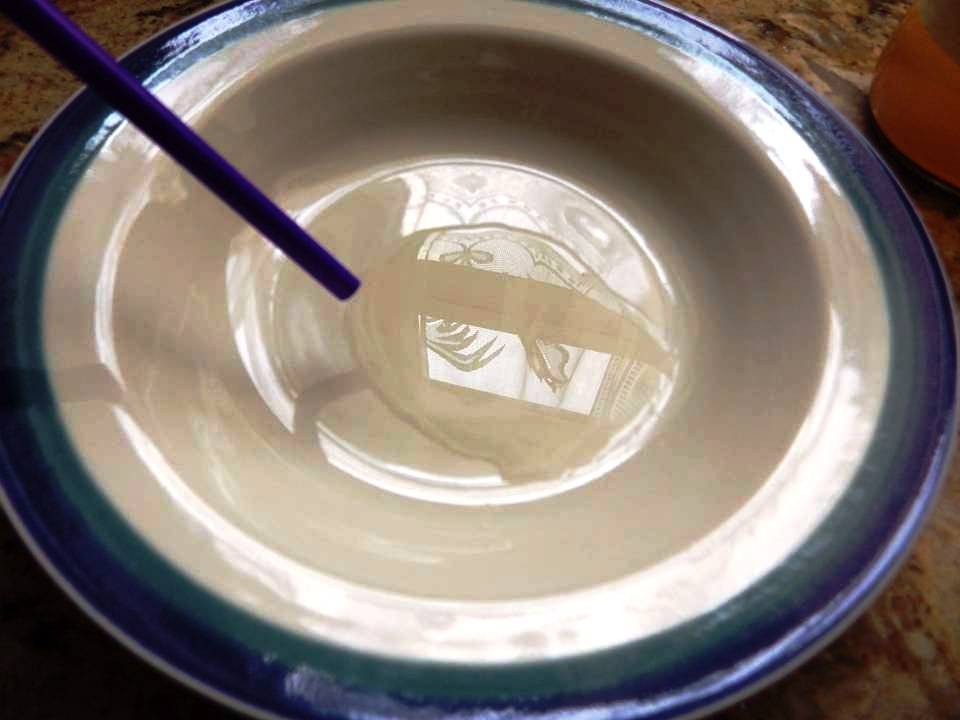
6. Hold the straw over a bowl and release the straw allowing your mother mix to drain into a small bowl and repeat until you have about 2 tablespoons in your bowl. Don’t worry about depleting the mother in the bottle, it should grow back.
7. Pour your 2 tablespoons of mother mix into your jug, jar or crock filled with your ethanol.
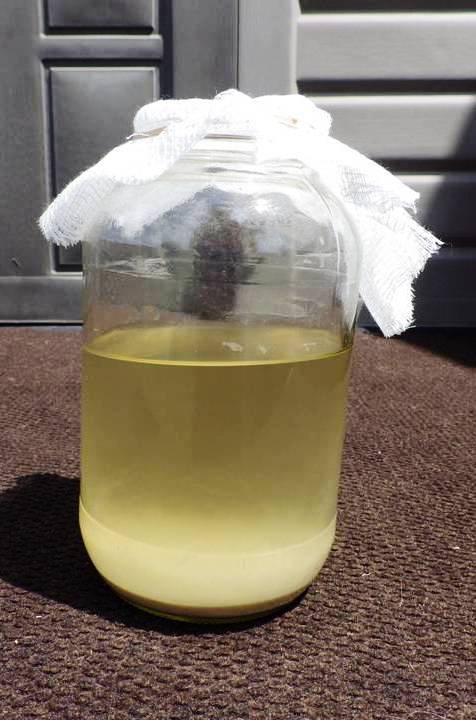
8. Cover the top of the jug, jar or crock with a few layers of cheesecloth and seal with a string or rubber band around the rim. This will keep flies and other insects out while your mother goes to work. You want air to circulate into your jug, jar or crock. This is what converts the alcohol into vinegar.
9. Stir or gently shake your mixture once a day and smell it. It should begin to present some vinegar flavor notes.
10. After about 5 days to a week, test your vinegar with a pH test strip. Your goal is a reading of 2.4 pH. If it’s more than that (and it probably will be) slowly add water a half-cup at a time until you get a reading of 2.5. If it’s less than 2.5 pH with your initial measurement, let it continue to ferment.
11. You can also taste the vinegar. It should taste like white vinegar. Only try a little -maybe a drop or two. If you’re not sure what pure vinegar tastes like, try a little from a jar of white vinegar you have around the house.

12. Remove the mother if you can (it might be a nice, congealed blob that’s easy to spoon out).
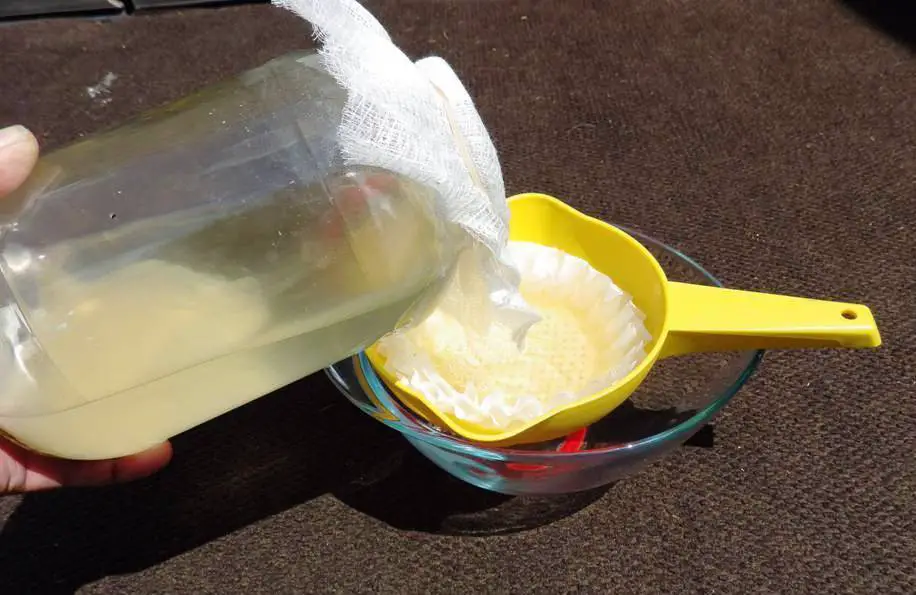
13. Filter your vinegar through the cheese cloth at the top of the jar and a coffee filter.
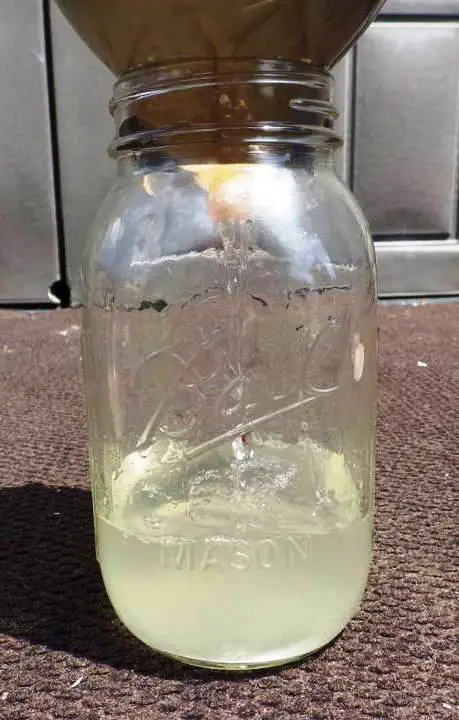
14. Keep filtering until it’s clear but not too much. You want to keep some of the mother in the vinegar. If not, filter, filter, filter through the coffee filters.
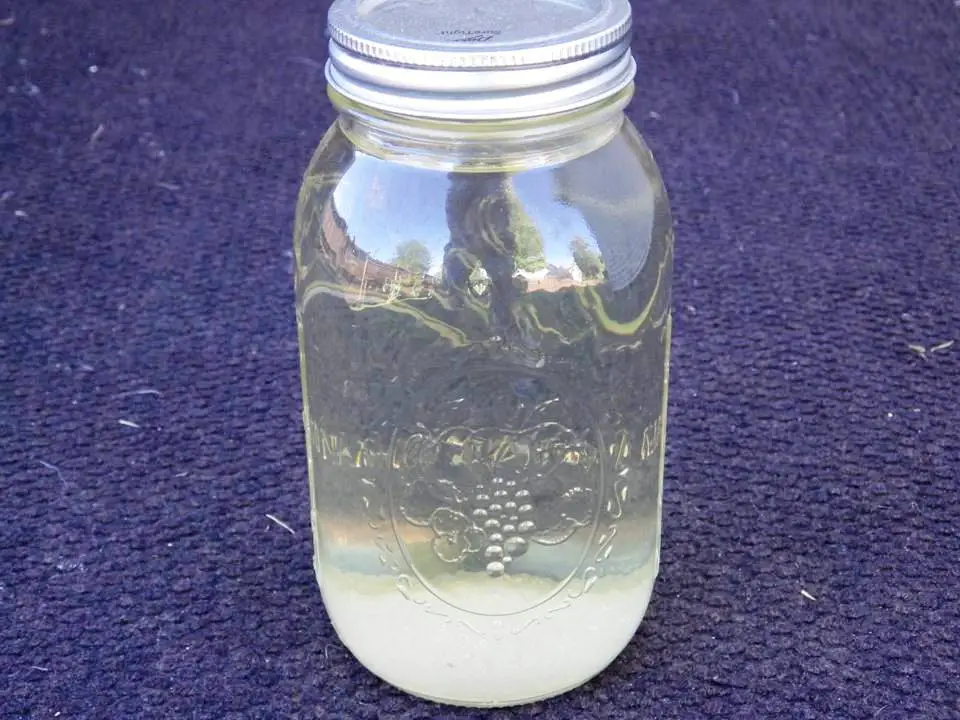
Bottle your vinegar and store wherever you usually store vinegar.
Growing Your Own Mother
In desperate times you may not be able to buy a bottle of organic cider vinegar. You also may not have it stockpiled. In those instances you’ll have to find a way to generate a bed of acetic bacteria (the mother). Here’s how to do it and know that there will be some trial and error.
What you’ll be trying to do is capture some wild yeast in the that just happens to contain aceto bacteria.

This will be hit or miss and you may have a few fails along the way. Here’s how to proceed:
- Strain your alcohol mix through cheese cloth and finally, a coffee filter.
- Place the alcohol in a wide-topped jar and cove with a few folds of cheesecloth to keep the fruit flies out and the oxygen in. Seal the cheesecloth around the rim with a rubber band.
- Store in a warm place with little or no light and wait. Hopefully you’ve captured some of that aceto bacteria.
- And now we wait some more. It could be a few weeks it could take months.
- As time goes on, smell your jar from time to time. If you smell vinegar flavor notes –that’s good. You could also dip a spoon and taste it.
- Another test is to use you pH test strips. As time goes on you’ll hopefully see the color of the strips shift towards acidic. What you’re hoping to see is a color reading on the test strip that corresponds to 2.4. That’s a 5% vinegar solution and you’re done.
- However, if your test shows a higher level of acidity, don’t despair. Just dilute it with water a half-cup at a time until you get to a 2.4 pH reading. Some people want a more potent vinegar (acetic acid) so they can dilute it to a higher total quantity of 5% vinegar.
- Filter your finished vinegar through a couple of layers of coffee filters and seal in a jar or jug. It should have a good shelf-life but it’s still best if stored in a cool, dark place.
pH Test Strips 101
An important part of making white vinegar is the ability to evaluate its acidity.
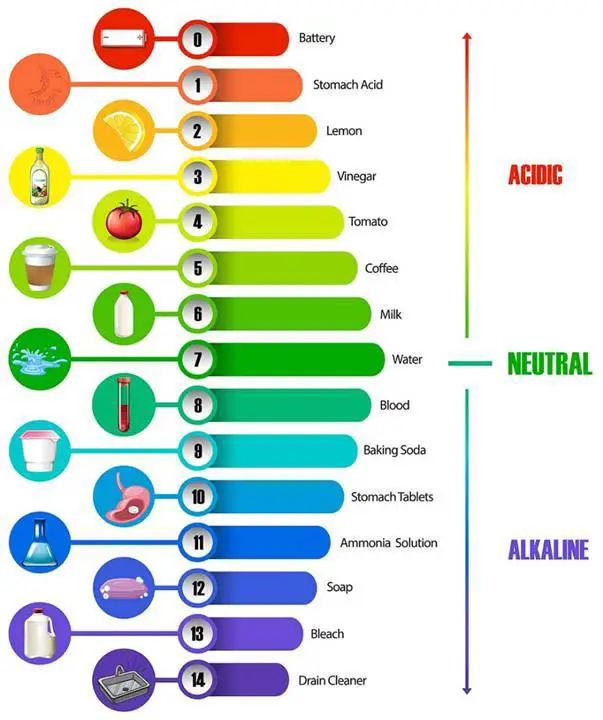
Here’s the color chart indicating color matches favoring the acidic end of the scale. Hopefully, the package of strips you buy has this color bar on the side of the package, although it will have numbers from 0 to 14 measuring across the range of acidity starting at 0 to neutral at 7 -continuing to the alkaline end of the scale at 14.
An Easy Way to Test pH
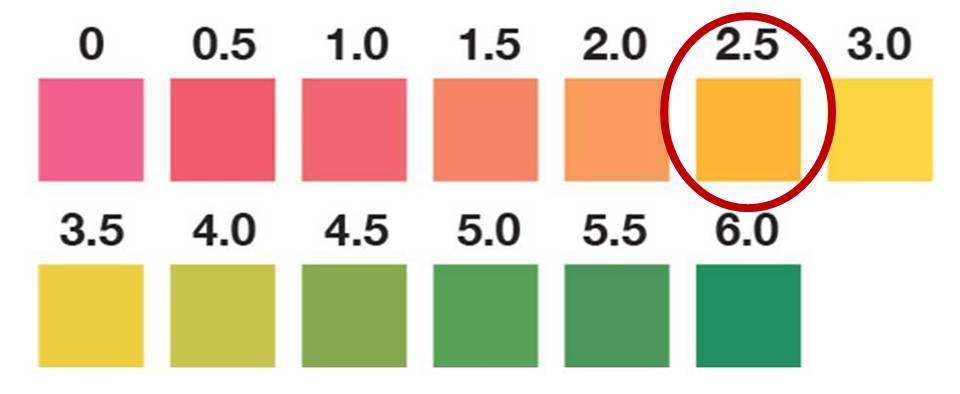
If you have a bottle of white vinegar that’s 5% acetic acid, dip a pH test strip in the vinegar and it will change color. You can now dip another pH strip into your homemade vinegar and compare the two test strips.
If the colors match, you’ve succeeded in making a 5% Acetic acid white vinegar. The pH should read in the 2.5 range. (2.4 to be exact) If the colors don’t match, diluting your batch with a little water might get you to the right color for a match.
If your test strip is tending towards the alkaline side of the scale you may need to let your vinegar ferment longer.
Is it Worth It?
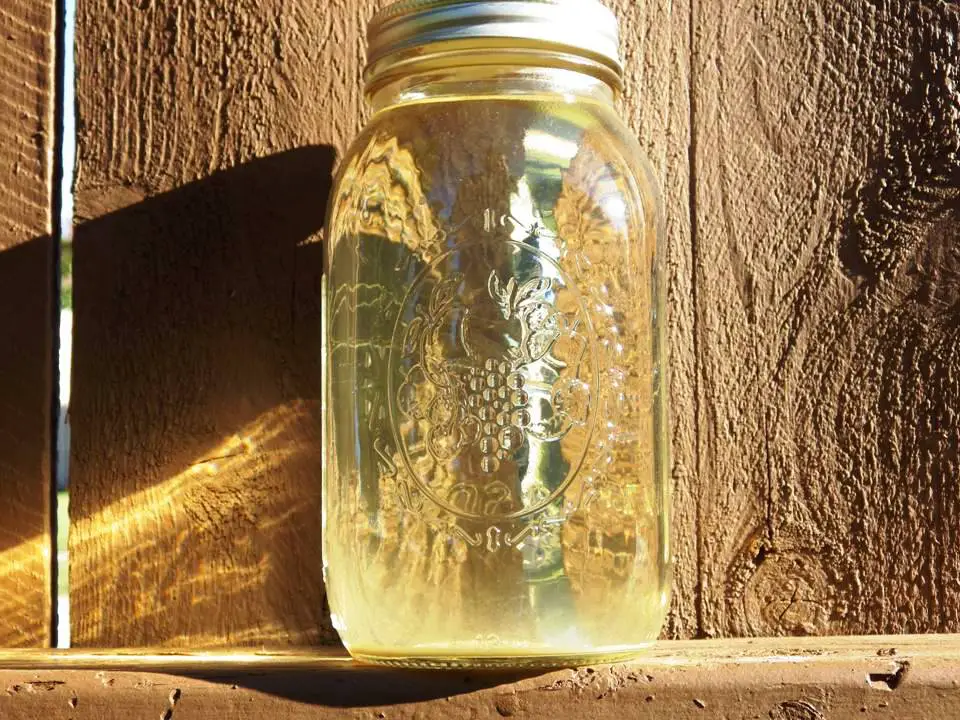
That all depends. If there are no sources for white vinegar, it’s definitely worth the time to make your own. On the other hand, if white vinegar is still available for a reasonable price it may be simpler to just stock up. It also depends on what you are using vinegar for.
Making cider vinegar and wine vinegar is much easier and is legal. Making white vinegar from scratch seems a lot more complicated for a variety of reasons. But at least now you know how to make it.
Like this post? Don't Forget to Pin It On Pinterest!
You May Also Like:



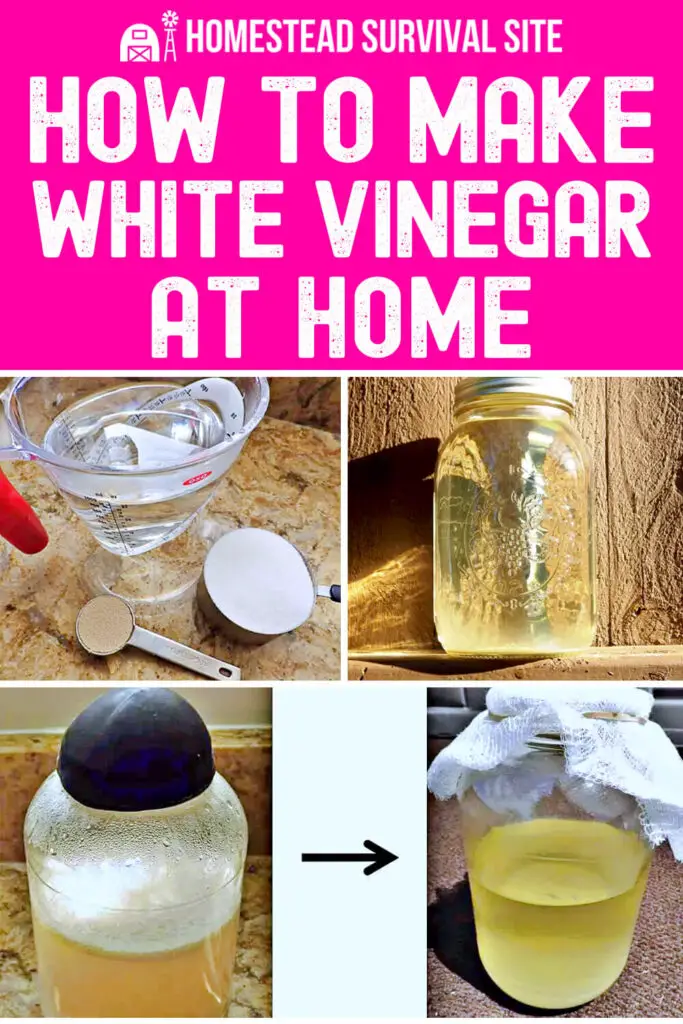


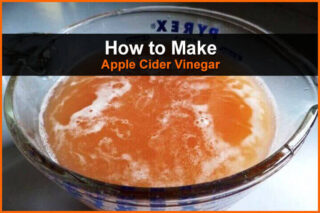

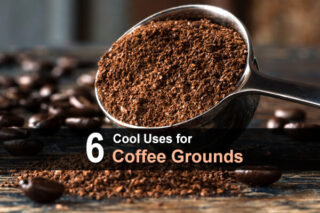



👏
I found your article fascinating. Can I use a piece of the mother that I use for making kombucha? I’m assuming it is the same thing but want to be sure.